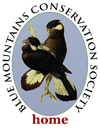Society Timeline from its inception in 1961
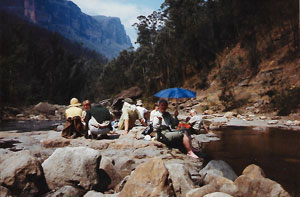 Society bushwalk to Burra Korain Flat on the Grose River
Society bushwalk to Burra Korain Flat on the Grose River c. 1985
The Blue Mountains Conservation Society celebrated its 60th anniversary in October 2021 - and since it was during the times of COVID-19, no public celebration could be held.
The October 2021 edition of Hut News contained many reminiscences and a time line that is reproduced below - but now with images and links.
Society bushwalks have been the cornerstone of our activities - whether experiencing our special places with others, or in quiet reflection, they pepper all our newsletters, create memories and continue to provide joy and friendship.
(click all images to see a larger version)
Preface (by Susan Crick)
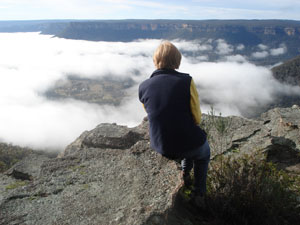 Mist in the Wolgan
Mist in the Wolgan c.2006 (Hugh Speirs)
To recall all the achievements of the Blue Mountains Conservation Society has been a challenging task and Alan Page, Meredith Brownhill, Lyndal Sullivan, Margaret Baker and Carolyn Williams have met this challenge in creating this timeline.
An essential and legal requirement such as governance barely rates a mention. The thousands of formal submissions and letters sent, bush walks arranged and meetings held also get little attention.
The Society was also actively involved in national campaigns such as Save The Franklin, Daintree and Myall Lakes, and has participated in Nature Conservation Council initiatives for decades.
This is a moment in our history to pause and reflect on where we've come from. While some people are mentioned, there are hundreds that should be - especially those that served on committees for many years. To those, we say thank you.
The Blue Mountains Conservation Societies since 1961.
Upper Blue Mountains Conservation Society (1961-1996)
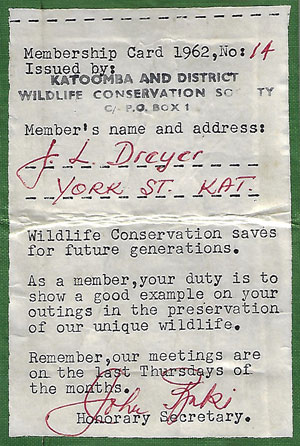 Society membership card in 1962
Society membership card in 1962
| 1961 |
The Katoomba and District Fauna and Flora Protection Society was formed. Frank Walford patron; Fred Astle president. |
| 1962 |
Name changed to Katoomba and District Wildlife Conservation Society, with the motto "wildlife conservation saves for future generations". |
| 1963 |
Official opening of the Conservation Hut, Wentworth Falls - a refurbished kiosk |
| 1960s |
Valley of the Waters 530A Committee took an active interest in protecting the environment and the walking tracks, including the Nature Trail. |
| 1960s |
Campaign to prevent limestone mining in the Colong Caves - now protected in Kanangra-Boyd National Park. |
| 1970 |
Newsletter No. 1 published. The October 2021 edition of Hut News is No. 396. |
| 1970 |
Allen Strom becomes patron. |
| 1971 |
Clutha coal mine in the Blue Mountains stopped. |
| 1973 |
Gas pipeline protest stopped a gas pipeline being built through the Wollangambe Wilderness. |
| 1974 |
Extensive town plan submission prepared and submitted to Council. |
| 1974 |
The Save the Boyd Plateau Campaign stopped pine plantations and a paper pulp mill on Boyd Plateau. The plateau was added to Kanangra-Boyd National Park in l977, and declared a wilderness in l997. |
| 1978 |
Land Preservation Committee formed. |
| 1979 |
Propagating and selling native plants went into full swing to provide funds for the Land Preservation Fund. Plants grown at home, especially by Grete Vanry and Jill Dark, were provided for sale. Native plant talks and walks conducted. |
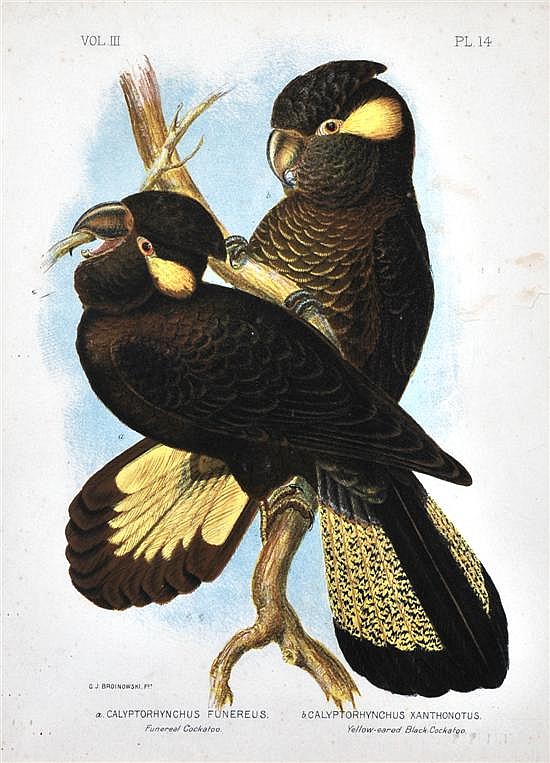 Gracius Broinowski's painting of
Gracius Broinowski's painting of
Yellow-tailed Black-Cockatoos
| 1981-3 |
Bell sand mining opposed. |
| 1983 |
Name changed to the Upper Blue Mountains Conservation Society. |
| 1983 |
Leura Convention Centre/Fairmont Resort campaign started. The Resort went ahead but with modification of building design. |
| 1984 |
Pillar extraction coal mining stopped at Belltrees (near Bell). |
| 1985 |
Gracius Broinowski's painting of a Yellow-tailed Black-Cockatoo first appears as the Society's logo. |
| 1987 |
Land acquired using Society funds and added to Water Nymphs Dell Reserve at Wentworth Falls. |
| 1987 |
The Society became an incorporated organisation. |
| 1988-92 |
Campaign against the proposed "Crocodile Park" at Wentworth Falls. |
| 1989 |
Friends of the Blue Mountains, the first bushcare group in the upper mountains, was formed by Society members. |
| 1989 |
Field work undertaken and submission compiled for Blue Mountains LEP 1991. |
| 1989 |
World Heritage for the Blue Mountains Campaign started as Geoff Mosley wrote the first submission - which was unsuccessful. The leaflet "Our Precious Heritage" was printed. |
| 1990 |
The campaign to save Elphinstone/Radiata Plateau from development was launched by Pulpit Hill residents. The Society, and especially Wyn Jones, was involved from the beginning. |
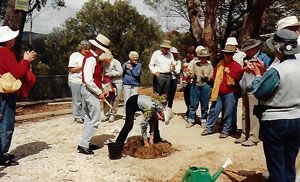 Grete Vanry planting a Sydney Peppermint at the "green" opening of the Hut in 1991.
Grete Vanry planting a Sydney Peppermint at the "green" opening of the Hut in 1991.
Robin Corringham supervising.
| 1991 |
Society nursery at Blackheath opened. |
| 1991 |
Campaign to elect environmentally friendly aldermen on the Blue Mountains City Council was successful. |
| 1991 |
Campaigned for some years against rezonings which would have allowed a great loss of bushland. The first Blue Mountains Local Environmental Plan provided for more environmental protection. |
| 1992 |
The World Heritage Walk. Wyn Jones inspired walkers and led the walk from Widden (Hunter Valley) through the national park system to Mittagong. |
| 1993 |
The new Conservation Hut and John Buki Garden officially opened. A time capsule was placed in the Hut's wall. |
| 1993 |
Environmental reference library was established in Katoomba Library with the Society's $3,000 donation. |
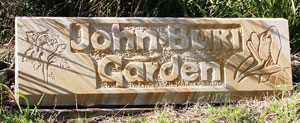 John Buki garden in front of The Hut.
John Buki garden in front of The Hut.
| 1993 |
Society convenes forum of Bushcare groups and relevant government agencies facilitating the formation of the Bushcare Network. |
| 1994 |
23ha inholding acquired using Society funds and included in the Kanangra-Boyd National Park. |
| 1996 |
The Society's newsletter is named Hut News and becomes a monthly publication under its new editor Christine Davies. |
Lower Blue Mountains Conservation Society (1966-1996)
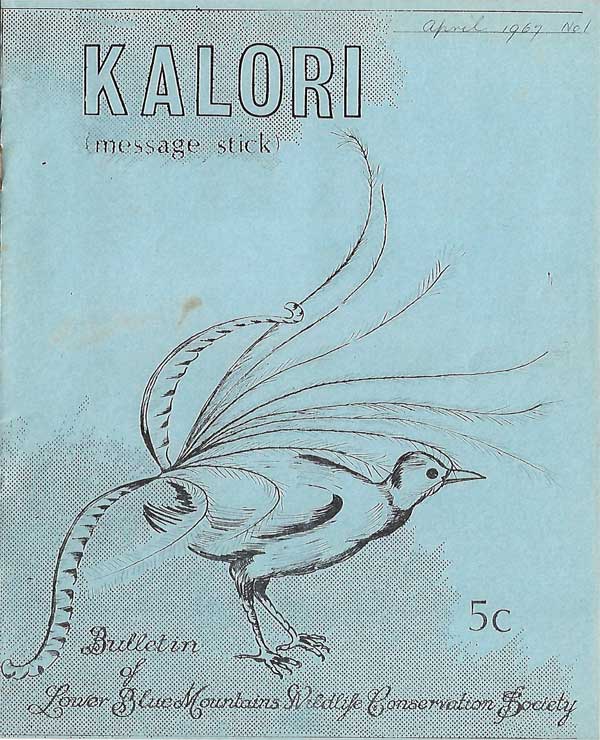 Kalori newsletter cover - April 1967
Kalori newsletter cover - April 1967
| 1966 |
The Lower Blue Mountains Wildlife Conservation Society (LBMCS) was formed. Mr. H.L. (Lindsay) Paish president. |
| 1967 |
First newsletter published known as "Kalori" which means "message stick". |
| 1967 |
Unsuccessful attempt to have the vacant crown land at Yellow Rock declared a Lyrebird Sanctuary. |
| 1968 |
Motto of "Conserve, Preserve, Investigate, Educate". |
| 1971 |
Clutha coal mine in the Blue Mountains stopped. |
| 1980s |
Campaign to protect Eucalyptus burgessiana (Faulconbridge Mallee Ash) from housing developments and frequent bushfire hazard reductions on northern side of Faulconbridge and Linden; process ongoing. |
| 1982 |
Darks Common dedicated after years of campaigning to protect the eastern escarpment from housing. |
| 1986 |
Submission to include the headwaters of Linden Creek in the Blue Mountains National Park. Campaign continues today on the now mostly E2 land. |
| 1988 |
Subdivision plans for a housing estate in Faulconbridge Mallee country opposed; in the 1991 final deliberation, house numbers were reduced and Burgessiana Reserve declared. |
| 1988-92 |
Campaign against the proposed "Crocodile Park" at Wentworth Falls. |
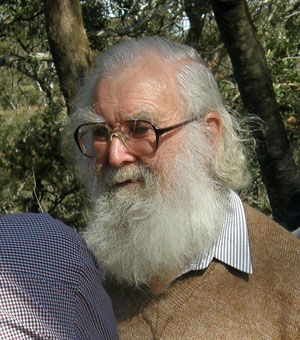 Mick Dark. President of the Society for nine years and Vice President for eight years. These were at different times in both the Lower and Upper Blue Mountains societies.
Mick Dark. President of the Society for nine years and Vice President for eight years. These were at different times in both the Lower and Upper Blue Mountains societies.
| 1991 |
290ha of unique Castlereagh Woodlands in Londonderry saved from the State government's mega rubbish tip proposal; LBMCS was part of the fighting committee from its inception. |
| 1991 |
Campaign to elect environmentally friendly aldermen on the Blue Mountains City Council (BMCC) successful. |
| 1991 |
Campaigned for some years against rezonings that would have allowed a great loss of bushland. The first Blue Mountains Local Environmental Plan provided for more environmental protection zonings. |
| 1992 |
LBMCS becomes incorporated; supports launch of Blue Mountains for World Heritage campaign. |
| 1993 |
Practical action to assist local campaigns eg restoration of Glenbrook Lagoon and Deanei Forest, Springwood. |
| 1993 |
Supported first threatened species legislation (NSW) and the first Gardens of Stone campaign. |
| 1994 |
Bushfire control policy and hazard reduction practices dominate discussion in the wake of the January Grose Valley fire; first proposal to raise the wall of Warragamba Dam opposed. |
| 1995 |
After many years of campaigning Yellomundee Regional Park was gazetted. |
| 1995 |
Members voted in November to amalgamate with the Upper Blue Mountains Conservation Society. |
Blue Mountains Conservation Society (from 1996)
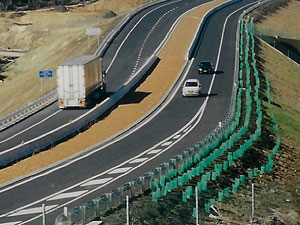 Society nursery plants on GWH in 2002
Society nursery plants on GWH in 2002 (David Coleby)
| 1996 |
The Lower and Upper Blue Mountains Societies merged. |
| 1996 |
Valley of the Waters bushcare group formed. |
| 1996-2005 |
Major campaign supporting the development of LEP 2005. |
| 1996-7 |
Wollemi Wilderness proposal supported. The Wollemi Wilderness was declared in 1999. |
| 1997 |
Drs Judy and Peter Smith published Buffer Zones for the Protection of Sensitive Vegetation Units in the City of Blue Mountains.
The study, commissioned by the Society and others, established 60m as the minimum buffer necessary to protect sensitive vegetation communities.
The findings of the study were adopted by Council. |
| 1997 |
Detailed submission to Draft LEP 1997. |
| 1998-2005 |
Detailed submission to Commission of Inquiry into Draft LEP 1997. |
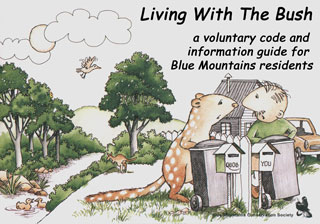 Living With The Bush booklet
Living With The Bush booklet
| 1998 |
The Society web site launched. |
| 1998 |
Living Near the Bush booklet developed and launched. |
| 1998 |
Amendment 25 to LEP 1991 approved giving protection to sensitive lands from subdivision development. |
| 1998 |
Earth sanctuaries proposal for Canyon Colliery. After an intense public campaign the government returned most of the Canyon Colliery site to the Blue Mountains National Park. |
| 1999-2008 |
Representations made to NSW government to incorporate Katoomba Airfield in National Park. |
| 1999 |
Lithgow silicon smelter opposed. The campaign resulted in strict environmental safeguards being imposed. |
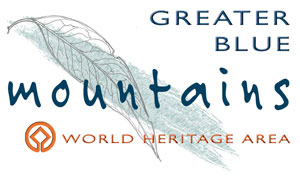 Greater Blue Mountains World Heritage Area
Greater Blue Mountains World Heritage Area (courtesy of NPWS)
| 2000 |
On 29th November 2000, the World Heritage Committee unanimously agreed to inscribe the Greater Blue Mountains Area on the World Heritage List. |
| 2002 |
Amendment to NSW Threatened Species Conservation Act to add a category of "Vulnerable Ecological Communities" which subsequently allowed Blue Mountains swamps to be listed. |
| 2002-07 |
Campaign to return Canyon Colliery to the national park. Most of the 900 hectares have been returned. |
| 2004 |
Stealth movie filming at Mt. Hay found to be unlawful - "declared wilderness areas are sacrosanct". |
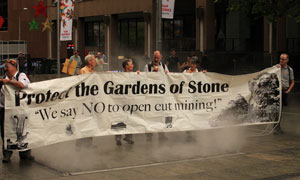 Protect Gardens of Stone Rally in 2012
Protect Gardens of Stone Rally in 2012
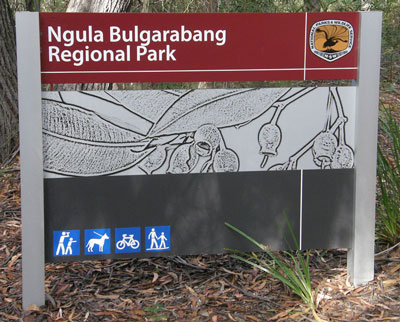 Ngula Bulgarabang Regional Park
Ngula Bulgarabang Regional Park

© 2025 Blue Mountains Conservation Society Inc.
We acknowledge the traditional custodians of this land
– the Darug and Gundungurra people –
and pay respect to their Elders past, present and emerging.
If you'd like to give feedback about this page please contact: webmaster@bluemountains.org.au
 Grete Vanry planting a Sydney Peppermint at the "green" opening of the Hut in 1991.
Grete Vanry planting a Sydney Peppermint at the "green" opening of the Hut in 1991. Mick Dark. President of the Society for nine years and Vice President for eight years. These were at different times in both the Lower and Upper Blue Mountains societies.
Mick Dark. President of the Society for nine years and Vice President for eight years. These were at different times in both the Lower and Upper Blue Mountains societies.